We have to interface with a device that is expecting a chain of 34 Ω resistors with switches connected to the input pins as shown below.
There is no information on the internal schematics of the device, but there is 10 V present on the open circuit and when shorted the current is limited to 5 mA. The documentation mentions "maximum input voltage 34 V", which is weird, since we are not expected to supply voltage to those pins.
My first thought was to simply emulate the suggested circuit with analog switches (like ADG715) and a bunch of resistors. Then I thought of digital potentiometers (like AD5254), that do not need resistors.
The problem, however, is that all these chips have analog voltage limits pretty close to their digital supply lines. So, it seems I need either a way to add a high-voltage-tolerant output stage to the digital pot, or use a completely different approach, like a DAC + VCR (voltage controlled resistor). Unfortunately analog circuits are still my weak spot; I'm not sure I can design a FET-based linear VCR properly.
Any other options I have missed? I should also mention that simplifying the circuit and reducing cost are important to us.



